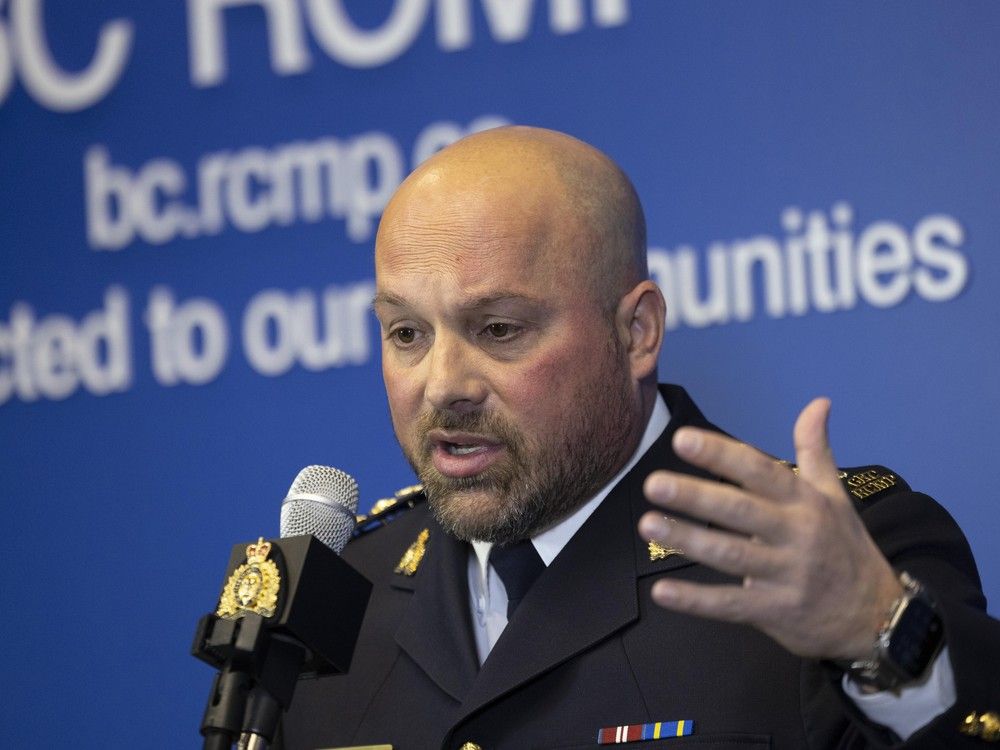
BANTRY, Ireland — Police in British Columbia have finally identified the mysterious man who helped test a bomb on Vancouver Island a few weeks before the Air India bombing on June 23, 1985.
RCMP Asst. Commissioner David Teboul told Postmedia that the previously unidentified suspect in the mass murder case recently died without ever facing charges.
He said he couldn’t release the name of the man due to privacy laws even though he’s now dead.
Teboul and several other RCMP officers are part of the Canadian delegation here to mark the 40th anniversary of the Air India bombing. Dozens of relatives of victims are arriving to attend the service at a memorial to the 329 people who died when a B.C.-made bomb exploded on Air India Flight 182 off the coast of Ireland.
Leading the Canadian delegation will be federal Public Safety Minister Gary Anandasangaree. Irish Prime Minister Michael Martin is scheduled to attend, along with local officials and a representative of the Indian government.
Teboul, who is the commander of federal policing in B.C., said that despite the acquittals of two key bombing suspects in 2005, investigators have continued to work on the file “to tie up some loose ends and discover more truth that’s independent of judicial process.”
That’s what lead them to uncover the identity of the mystery suspect, dubbed Mr. X, who travelled to Duncan on June 4, 1985, with terror plot mastermind Talwinder Singh Parmar. The two men then joined up with electrician Inderjit Singh Reyat.
The trio went into the woods and tested a bomb all while they were being followed by agents from the Canadian Security Intelligence Service. The agents heard the blast but thought it was a gunshot.
Parmar, founder of the Babbar Khalsa Sikh separatist group, was killed by police in Punjab in 1992 before he could be charged in the Air India terrorism plot.
Reyat was convicted of manslaughter for building another bomb that exploded at Japan’s Narita Airport 54 minutes before the Air India blast. Two baggage handlers were killed. And he pleaded guilty to assisting Mr. X and Parmar build the Air India bomb.
But he testified at the trial of his co-accused that he didn’t know X’s name. He was later convicted of perjury.

Teboul said that while there is an continuing investigation “there’s very little realistic chance of seeing this matter go to another trial.”
But officers are doing administrative work like returning exhibits and working with families to better memorialize the victims.
The RCMP is working with the federal Global Affairs Department to get an agreement with the government of India to allow pieces of the Boeing 747 recovered from the ocean to remain in Canada as part of a permanent exhibit or memorial, he said.
It’s important for Canadian investigators who worked on the case to attend the memorial here “out of respect for the families, out of respect and remembrance of the victims,” said Teboul, who is on his third trip to the seaside memorial at Ahakista, Ireland.
“This is the largest act of terrorism in the history of Canada, so we — the RCMP — have an obligation to memorialize it and pay respect every year.”
He has developed close ties with Irish first responders who pulled as many of the victims’ bodies out of the sea as they could that day.
“It was really a Canadian tragedy, first and foremost. But it was also an Irish tragedy. A lot of Irish folks have been very invested in it through the last 40 years,” Teboul said. “It’s part of their history. So there’s a lot of emotions there.”
Blueksy: @kimbolan.bsky.social